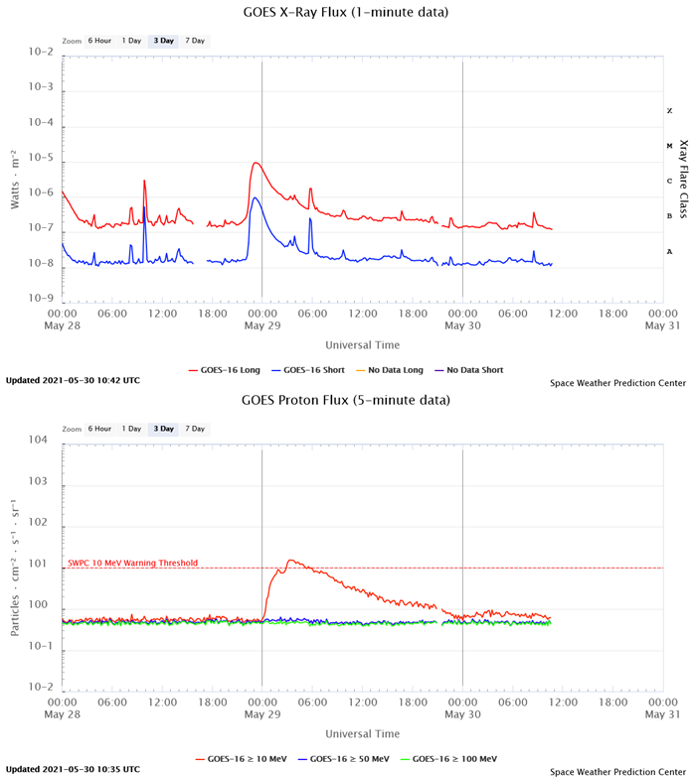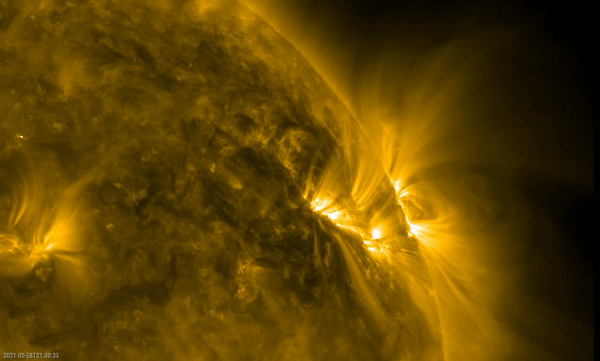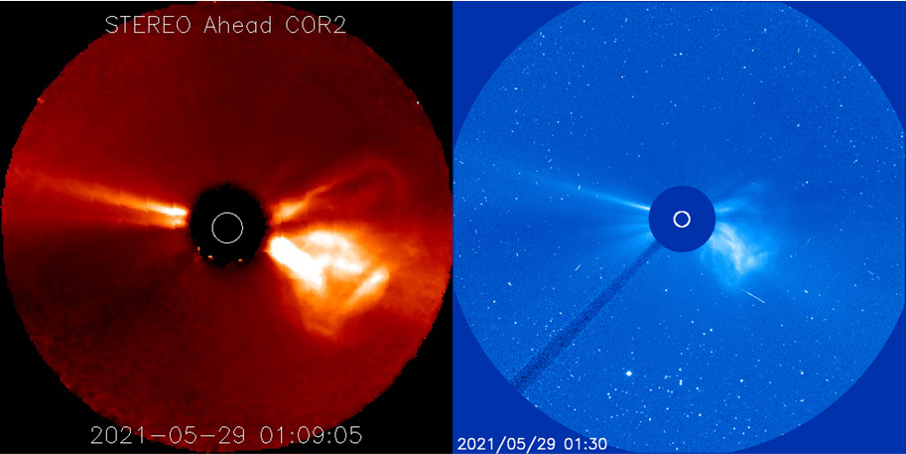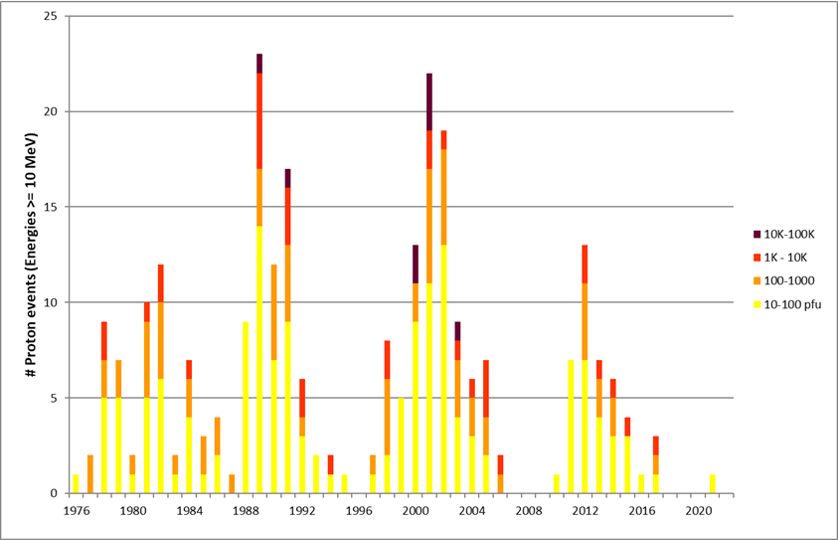The first proton event of solar cycle 25 (SC25) took place on 29 May. Following a long duration C9.4 flare that peaked at 23:13UT on 28 May, the proton flux reached the 10 pfu alert threshold on 29 May at 03:00UT, peaked at 03:20UT (15 pfu, with 1 pfu = 1 proton / cm2 s sr), and ended at 05:40UT. This was a weak event, reaching only S1 on the NOAA scale, i.e. a minor solar radiation storm. It was barely noticeable in e.g. coronagraphic imagery. Also, the fluxes of protons with higher energies (> 50 MeV , > 100 MeV) remained at their background values.

The source of this C-class flare and associated proton event was active region NOAA 2824, a small and decaying sunspot region located N21W63 at the time of the eruption. Its location in the western hemisphere favored a good magnetic connection with the Earth, a typical situation for proton events. An arcade, a series of post-eruption coronal loops could be seen rising over the blast site (see this annotated image in the SDO/AIA 171 imagery). A coronal mass ejection with a plane-of-the-sky speed around 880 km/s (CACTus) was observed off the west limb in SOHO and STEREO-A coronagraphic imagery. An earth-directed component could not be excluded and may affect the earth environment on 1-2 June.


This is the first proton event since 10-11 September 2017, and the first for SC25. Underneath per year the number of proton events binned per peak intensity corresponding to the NOAA scales S1 to S4 (based on the NASA/GSFC list). There hasn't been any S5 event (peak flux > 100.000 pfu) since systematic GOES measurements started in 1976. More information on the intensity, classification and space weather effects of proton events is in this STCE Newsitem.






